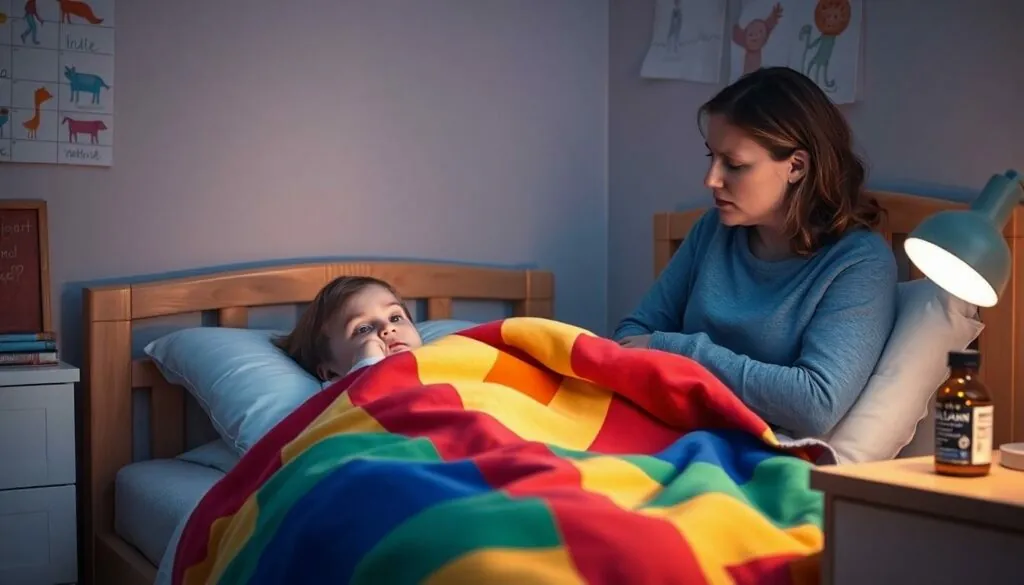Table of Contents
ToggleWhen it comes to kids and sleep, it’s often a battle of epic proportions. Parents find themselves caught in a nightly showdown, armed with bedtime stories and soothing lullabies, only to face the dreaded “I’m not tired!” protest. As sleep deprivation takes its toll, many wonder if sleep medication might be the secret weapon they need to restore peace in the household.
Overview of Sleep Medication for Kids
Sleep medication for kids offers a range of options for parents seeking solutions for their children’s sleep issues. Prescription medications typically include options like melatonin and antihistamines, which may be effective. Non-prescription alternatives exist, such as herbal remedies and over-the-counter supplements.
Many experts recommend using medication as a last resort after trying behavioral interventions. Cognitive-behavioral therapy and sleep hygiene practices can often produce significant improvements. A child’s specific situation, including age and underlying health conditions, influences the suitability of any sleep medication.
Dosage plays a critical role in effectiveness and safety. If parents consider medication, consulting a healthcare professional is essential. Individualized assessments lead to appropriate recommendations based on each child’s needs.
Research indicates that melatonin, a hormone naturally produced by the body, is commonly used to facilitate sleep in children. Usage should align with the child’s specific sleep difficulties, such as insomnia or circadian rhythm disruptions. Likewise, potential side effects, including daytime drowsiness or behavioral changes, require careful monitoring.
Parents often explore natural alternatives as initial improvements seem possible. These can include establishing consistent sleep schedules or creating calming bedtime routines, which might alleviate sleep issues without medication. Progress takes time, so patience is vital.
Understanding the complexities of sleep medication ensures informed decisions. Factors like potential dependency and long-term effects determine whether medication suits one’s child. Parents prioritize communication with healthcare providers to navigate these challenges effectively.
Types of Sleep Medications
Various sleep medications exist for children, with options spanning prescription drugs to over-the-counter alternatives. Each category serves specific needs and situations.
Prescription Medications
Prescription medications often include melatonin and certain antihistamines. Melatonin supplements mimic the natural hormone produced by the body, aiding in sleep regulation. Antihistamines, typically prescribed to alleviate allergies, may have sedative effects helpful for sleep. Healthcare professionals determine appropriate dosages, considering a child’s specific health profile. Monitoring for side effects remains crucial, as children may experience drowsiness or irritability. Some experts advocate for using these medications only when behavioral modifications have not achieved desired results.
Over-the-Counter Options
Over-the-counter options encompass natural supplements and other non-prescription aids. Melatonin supplements also fall under this category, available without a prescription. Herbal remedies like chamomile or valerian root may promote relaxation and sleepiness. These alternatives often lack extensive clinical testing, prompting caution. Parents should evaluate these products carefully, ensuring suitability for their child’s age and health conditions. Consulting with healthcare providers minimizes risks associated with these over-the-counter options, facilitating safer sleep solutions for children.
Safety and Efficacy
Ensuring the safety and efficacy of sleep medication for children requires careful consideration. Parents must understand the potential side effects and long-term implications of such medications.
Common Side Effects
Common side effects of sleep medications include drowsiness, irritability, and digestive issues. Drowsiness may lead to grogginess the following day, impacting a child’s performance at school. Irritability can disrupt mood, causing increased fussiness or emotional outbursts. Digestive issues might manifest as nausea or stomach pain, leading to discomfort. Monitoring a child’s response to medication is essential to address these effects promptly. Consulting with healthcare professionals can provide guidance on managing side effects effectively.
Long-Term Use Considerations
Long-term use of sleep medications can raise concerns regarding dependency and potential negative effects on sleep architecture. Dependency may develop if children become reliant on medications to fall asleep, potentially hindering their ability to establish natural sleep patterns. Additionally, research suggests that prolonged use can alter sleep stages, affecting overall sleep quality. Parents must weigh these risks against potential benefits, ensuring that medication remains a last resort. Open discussions with healthcare providers can facilitate informed decisions about treatment options and necessary evaluations.
Alternative Approaches
Exploring alternative approaches can lead to effective solutions for sleep issues in children. Parents often find success through behavioral interventions like cognitive-behavioral therapy, which aims to address underlying sleep anxieties. Establishing consistent sleep schedules proves beneficial, reinforcing the body’s natural circadian rhythms.
Creating calming bedtime routines also plays a crucial role. Activities such as reading, warm baths, or gentle music can promote relaxation and signal the transition to sleep. Parents can encourage a screen-free environment before bedtime, as blue light from devices negatively impacts melatonin production.
Natural supplements serve as another option for children with sleep difficulties. Options like chamomile or valerian root may support relaxation, though parents should consult healthcare professionals to ensure safety and appropriateness. Additionally, weighted blankets gain popularity for their calming effects, helping children feel secure as they drift off to sleep.
Mindfulness practices, including meditation and yoga, also provide valuable tools for reducing stress and anxiety around bedtime. A simple practice of deep breathing can help calm racing thoughts, making it easier for children to relax. Engaging in these activities together can foster a sense of bonding and make bedtime more enjoyable.
Prioritizing open communication with healthcare providers remains essential throughout this process. Regular discussions help monitor the child’s progress and adjust strategies as needed. By integrating a combination of these approaches, parents can create a supportive environment that fosters healthy sleep habits without always resorting to medication.
Conclusion
Navigating sleep challenges in children can be daunting for parents. While sleep medications may offer a quick fix, they should be approached with caution and ideally as a last resort. Prioritizing behavioral interventions and establishing calming bedtime routines can often yield better long-term results.
It’s essential for parents to engage in open conversations with healthcare professionals to ensure any chosen approach aligns with their child’s unique needs. By combining natural methods with professional guidance, families can foster healthier sleep habits and improve overall well-being. Ultimately, the goal is to create a peaceful nighttime environment that supports restful sleep for both children and their parents.








